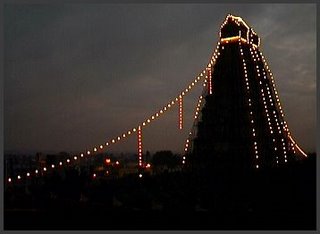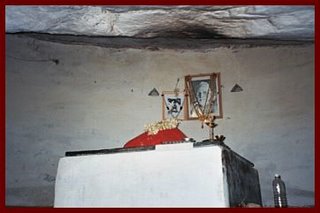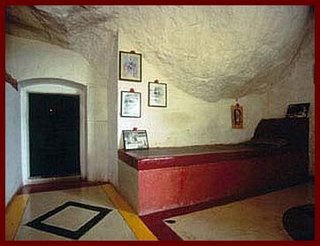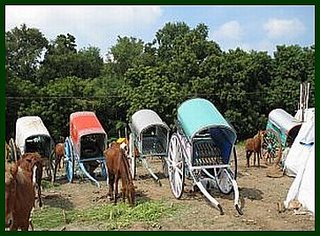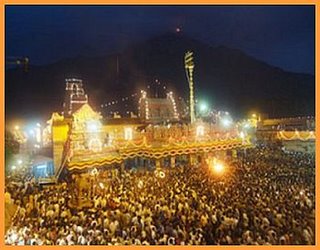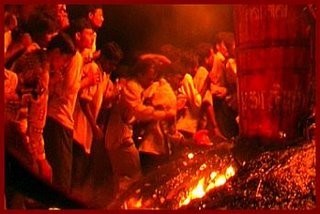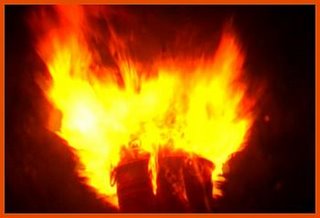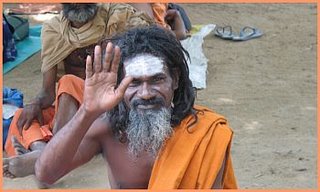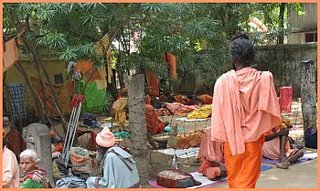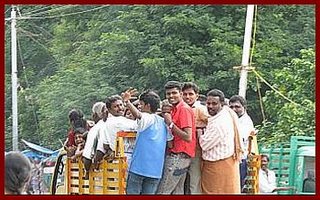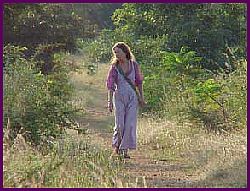On an earlier post on this Blog:
http://arunachalagrace.blogspot.com/2006/11/deepam-calendar.htmlall the processional events at Arunachala during Deepam were listed. The major procession of the Juggernaut carrying representations of the five deities and pulled by devotees around the perimeter roads of Arunachaleswarar Temple (a feat which can take upward of 12 hours) always takes place on the 7th day of Deepam Festival. This is the grandest and most fervent procession of the entire festival.
The first night of the lighting of the flame actually takes place on the 10th day of Deepam and stays alight for between 8-10 days. However the Festival itself lasts for 13 days. Of these the first 3 days occur in Durgai Amman Temple and the remaining ten days in Arunachaleswarar Temple. Each day denotes different functions and ceremonies at either the Durga Temple, the Arunachaleswarar Temple or in the streets surrounding them.
The Deepam festival follows the moon calendar so each year the date is different however it always falls when the star Krittika is in conjunction with the Moon in the month of Karthika (November-December). To find out the dates of upcoming Poornimas (full moons) and Deepams through to the year 2009, please check the following link:
http://www.arunachalasamudra.org/fullmoon.html
The seventh day of this year's Deepam fell on November 30th and down below are photographs showing you some of the devotion, fervour and fun of what is considered the grandest procession of the Deepam Festival.
Tiruvannamalai wakes early ready for the grand event.
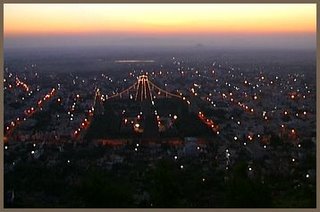
Its cool and moist early morning in this damp wet season.
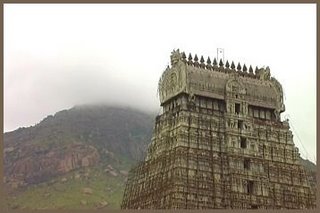
Here the giant car, the Juggernaut majestically and slowly is being pulled with iron chains by hundreds of devotees.
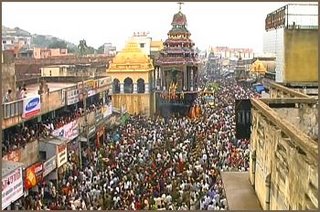
A young local lad blows on his conch and joins the sounds of cheers, music and the calls of the crowd all converging around the giant float carrying representations of five deities around the huge perimeter of the 26 acre Temple.
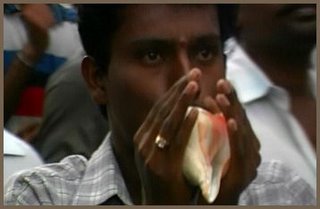
Here is a wheel of the giant float. Young men push levers underneath its wheels whenever the Juggernaut grinds to a halt. Once the lever is in position men and boys jump gleefully on the lever to impel the float forward.
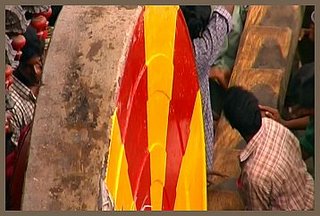
On the left side of the Juggernaut the iron chains towing the vehicle are pulled by ladies and on the right side, by men. To be involved in the procession of the five deities on the Juggernaut is regarded as a great blessings by all locals.

People are waiving from roofs, jammed on balconies and tucked away at any vantage point they can find to watch the majestic, slow progress of the giant vehicle through the main streets of Tiruvannamalai around the perimeter of the Arunachaleswarar Temple. This journey of circumbulation can in fact take up to 12 hours.
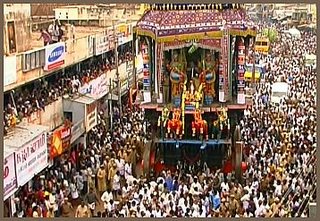
Another view of the giant float which is populated with swarms of men and lads.

One of our worthies trying to keep law and order in the chaos of the Festival. There is not too much in the way of crime to worry about, the concern is more about trying to keep some kind of flow and movement going on in the City. This year over 6,000 police have been drafted from surrounding areas to come into Tiruvannamalai during the Festival to secure the comfort and safety of devotees.
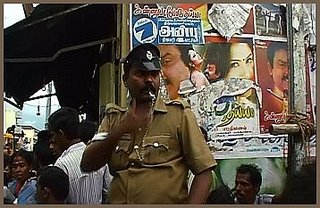
The journey is now almost complete and the Juggernaut is nearly home in its permanent garage outside the Arunachaleswarar Temple.

The seventh day of Deepam Festival is over for another year. And after the huge crowds and excitment of the procession of the giant float, the Temple and City sleeps.
